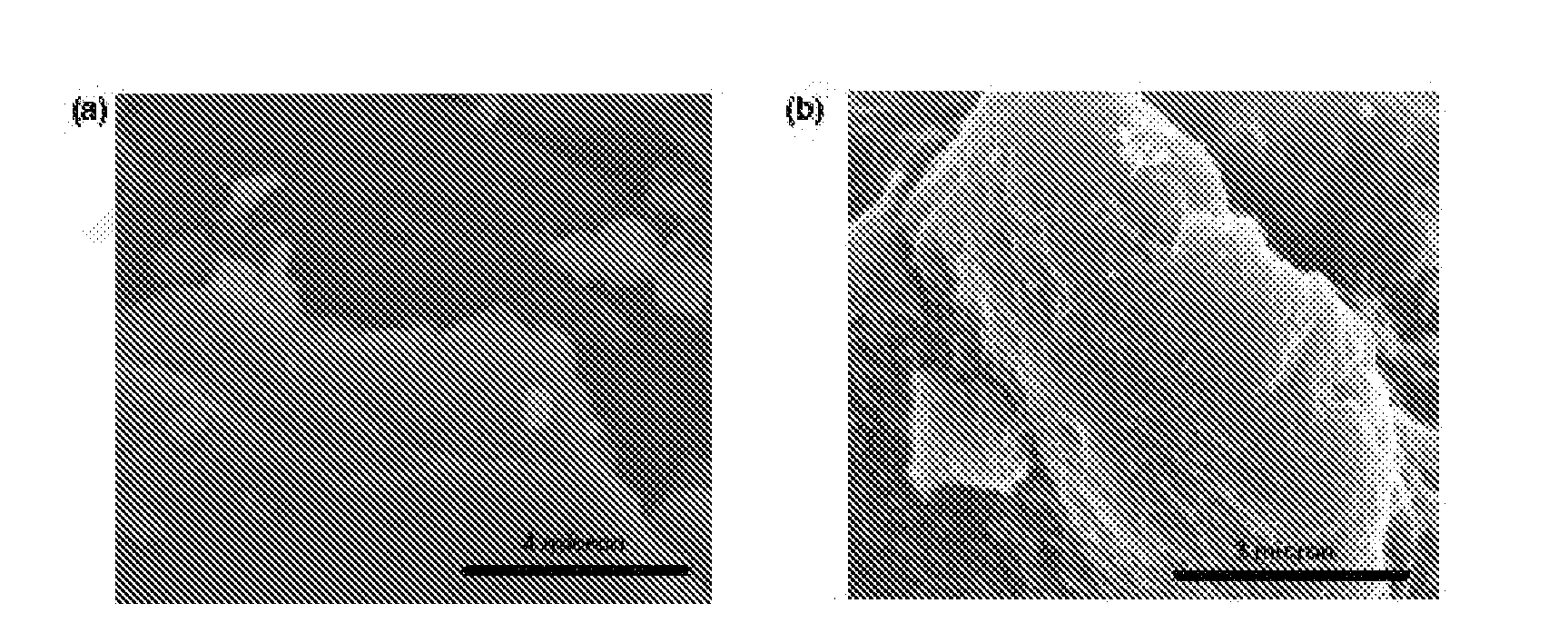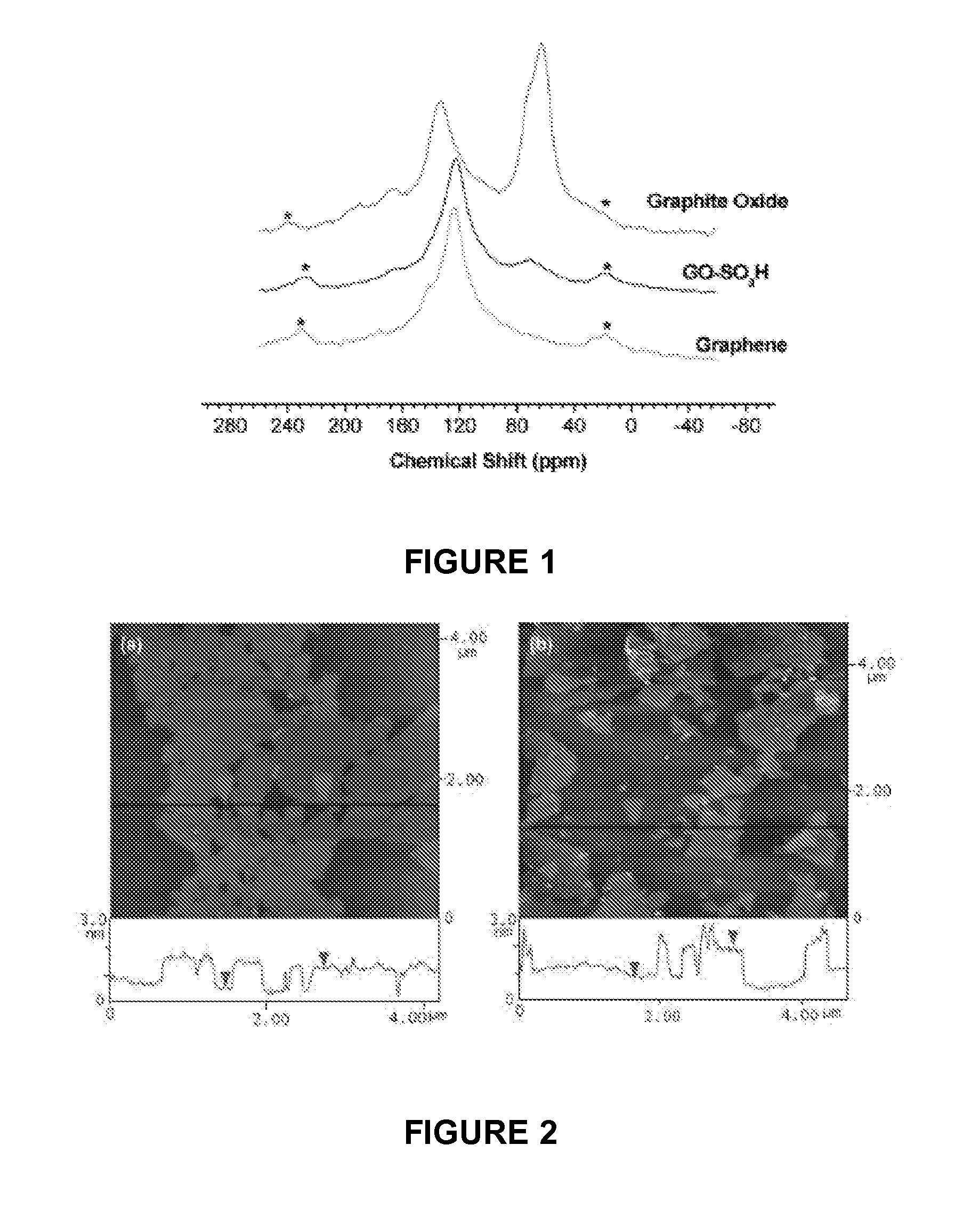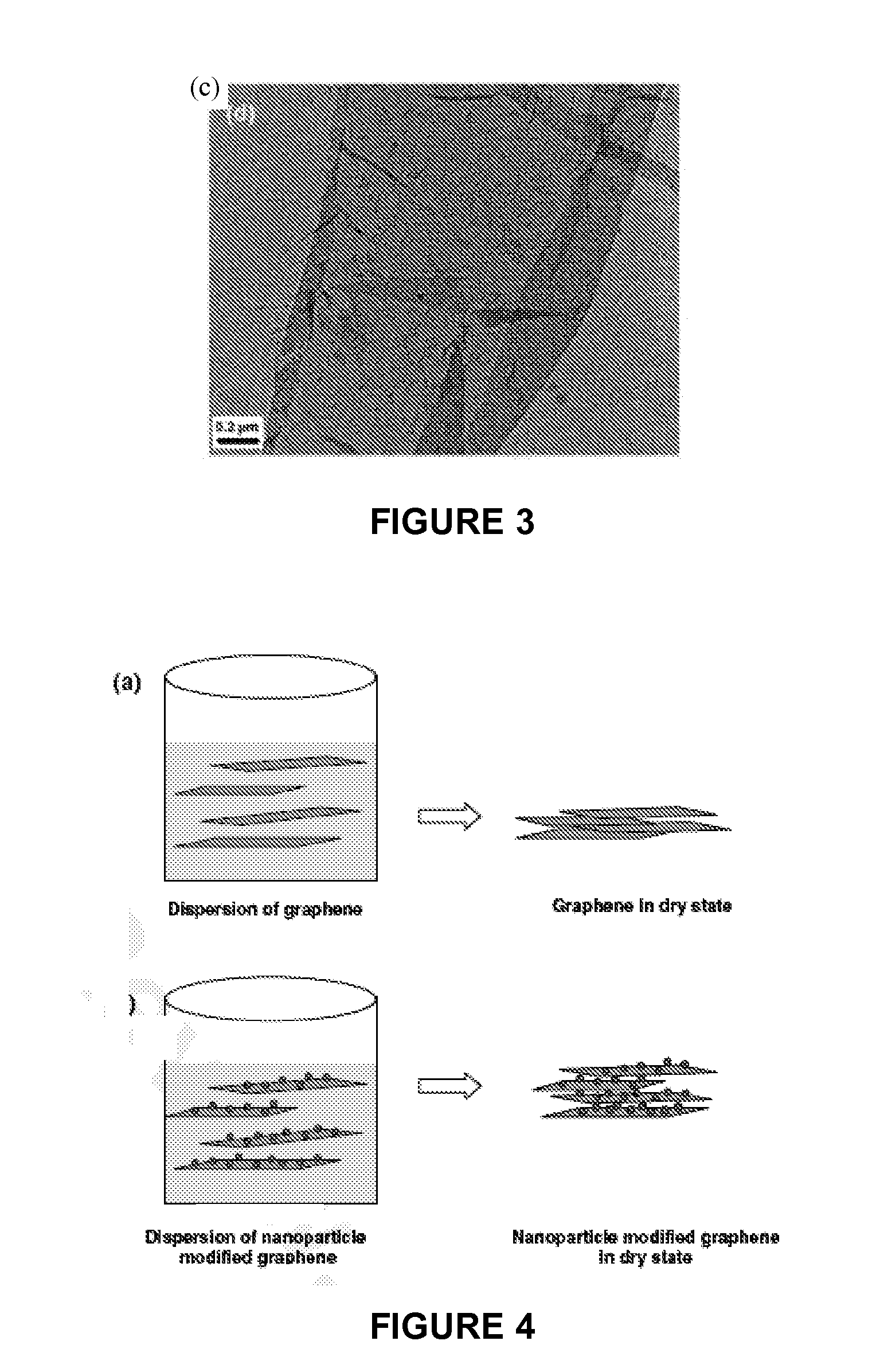Synthesis of graphene sheets and nanoparticle composites comprising same
a technology of graphene sheets and nanoparticles, applied in the direction of conductive materials, non-conductive materials with dispersed conductive materials, inorganic chemistry, etc., can solve the problem of difficult dispersing a large number of graphene sheets in a solven
- Summary
- Abstract
- Description
- Claims
- Application Information
AI Technical Summary
Benefits of technology
Problems solved by technology
Method used
Image
Examples
example 1
[0104]Graphite oxide prepared from natural graphite flakes (325 mesh, Alfa-Aesar) by Hummer's method was used as the starting material. In a typical procedure, 75 mg of graphite oxide was dispersed in 75 g water. After sonication for 1 hour a clear, brown dispersion of graphene oxide was formed.
[0105]The process of synthesizing graphene from graphene oxide consisted of three steps: 1) pre-reduction of graphene oxide with sodium borohydride; 2) sulfonation with the aryl diazonium salt of sulfanilic acid; and 3) post-reduction with hydrazine. In the pre-reduction step, 600 mg of sodium borohydride in 15 g water was added into the dispersion of graphene oxide after its pH was adjusted to about 9-10 with 5 wt % sodium bicarbonate solution. The mixture was maintained at about 80° C. for 1 hour under constant stirring. During reduction, the dispersion turned from dark brown to black accompanied by out-gassing. Aggregation was observed at the end of the first reduction step. After centrifu...
example 2
[0108]The isolatable and dispersible graphene of example 1 was analyzed using solid state 13C Magic Angle Spinning Nuclear Magnetic Resonance (MAS NMR) spectrometry to determine the extent of graphene oxide reduction. The 13C MAS NMR was a Bruker 360 spectrometer operating at 90.56 MHz and used a 4 mm rotor spinning at 9.4 k rpm without decoupling.
[0109]FIG. 1 shows 13C NMR spectra of graphite oxide, sulfonated graphene oxide (GO-SO3H) and the graphene of example 1, respectively. Two distinct resonances dominate the spectrum of graphite oxide: the resonance centered at 134 ppm corresponding to unoxidized sp2 carbons; the 60 ppm resonance is a result of epoxidation, and the 70 ppm shoulder is from hydroxylated carbons. For graphite oxide with a low degree of oxidation, the latter resonances overlap, and a weak broad resonance corresponding to carbonyl carbons is observed at 167 ppm. After pre-reduction, the 60 ppm peak disappears and the 70 ppm and 167 ppm resonances weaken significa...
example 3
[0110]Atomic Force Microscopy (AFM) images of partially sulfonated graphene produced in Example 1 or graphene oxide on a freshly cleaved mica surface were taken with a Nanoscope III in tapping mode using a NSC14 / no Al probe (MikroMasch, Wilsonville, Oreg.).
[0111]AFM images confirm that evaporated dispersions of graphene oxide and partially sulfonated graphene are comprised of isolated graphitic sheets (FIGS. 2a and b, respectively). The graphene oxide has lateral dimensions of several microns and a thickness of 1 nm, which is characteristic of a fully exfoliated graphene oxide sheet. After the final reduction step, the lateral dimensions of partially sulfonated graphene range from several hundred nanometers to several microns. It is hypothesized that graphene sheets several microns on edge could be obtained if sonication is controlled throughout the process. The surface of the partially sulfonated graphene sheets was rougher than that of graphene oxide.
PUM
| Property | Measurement | Unit |
|---|---|---|
| zeta potential | aaaaa | aaaaa |
| thickness | aaaaa | aaaaa |
| thickness | aaaaa | aaaaa |
Abstract
Description
Claims
Application Information
 Login to View More
Login to View More - R&D
- Intellectual Property
- Life Sciences
- Materials
- Tech Scout
- Unparalleled Data Quality
- Higher Quality Content
- 60% Fewer Hallucinations
Browse by: Latest US Patents, China's latest patents, Technical Efficacy Thesaurus, Application Domain, Technology Topic, Popular Technical Reports.
© 2025 PatSnap. All rights reserved.Legal|Privacy policy|Modern Slavery Act Transparency Statement|Sitemap|About US| Contact US: help@patsnap.com



